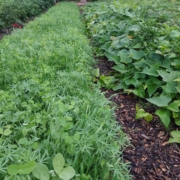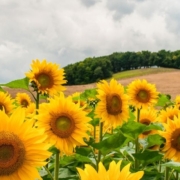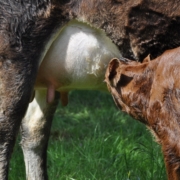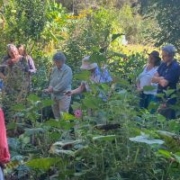Organic & Biodynamic Winegrowing Conference 2015
The inaugural Organic and Biodynamic Winegrowing Conference was held in Blenheim over 8-10 July and by all accounts was a huge success. Su Hoskin shares her impressions.
The opening to the conference was outstanding, with a blessing from indigenous practitioner Kiley Nepia, descendant of the Ngati Kuia, Ngati Apa ki te Ra To and Rangitane tribes, acknowledging Papatuanuku (Mother Earth) and Ranginui (Sky Father).
A cornucopia of subjects
With the theme Below, Above and Beyond, the 250-strong audience was treated to three days of everything, from wild yeast ferments to farming water, climate change to the whakapapa of wine.
The result was a terrific line-up of confident, influential speakers whose delivery and content was inspirational, highly educational, and reassuringly positive about where consumer demand lies in the scheme of things.
Amazing speakers
 The feedback received from key speaker Monty Waldin was one of magnitude for the high quality of wines and the level of integrity practiced among New Zealand’s wine growers.
The feedback received from key speaker Monty Waldin was one of magnitude for the high quality of wines and the level of integrity practiced among New Zealand’s wine growers.
Philippe Armenier gave a beautiful overview of the sun’s path in relation to the seasons and the timing of biodynamic applications. His reference to the form of the vine leaf in relation to the movement of planet Mercury and the rhythm of the Sun was fascinating.
Focus Vineyard report
A main drive of the conference was around trials and results. The Focus Vineyard report showed organic and biodynamic vineyard management to be as effective as conventional methods, whilst no more costly. Additional bonuses include a healthier, quality product which demands a higher premium, a more sustainable future for the land with increased mindfulness of land husbandry, and a happier workforce.
Organic case study: Alsace
A food and wine discussion based on the Alsace region of France was particularly impressive, with a great example of how organic farming methods affect the whole region: everyone buys in from and supports the local community. The farmers, restaurants and shops support one another, the demand for bee products and fresh seasonal produce increases, more jobs are created, cleaner water and healthier environmental practices mean safer lifestyles for children whilst keeping house prices stable with less pressure on hospital departments, etc. – a win-win situation all round.
New friends and foodie feasts
It was good to meet some of the BioGro team; a great opportunity to create better communications in the future.
The seven-course organic feast was incredible, with locally sourced organic and biodynamic foods prepared lovingly by Bevan Smith of Riverstone Kitchen, Oamaru. This was another chance to sample some of our country’s finest wines.
Slightly biased opinion here, but it’s always a joy to taste Milton, Carrick and Seresin wines. These, coincidentally, drew the largest crowds and displayed the best of the best (in my view) when it came to national wine tastings.
The Association makes connections
Between a roster of volunteers, the Bio Dynamic Farming and Gardening Association’s information stand engaged with a number of people interested in the biodynamic movement and Demeter. Our display of preps, cow horns and the calendar became talking points for the holistic management of land, which reflects the important status of our position in the world view of this clean, green Land of the Long White Cloud.
Finally, it was wonderful to experience the region, make new acquaintances, catch up with familiar faces and discuss some of the insights we’d gained from the excellent speakers throughout.










